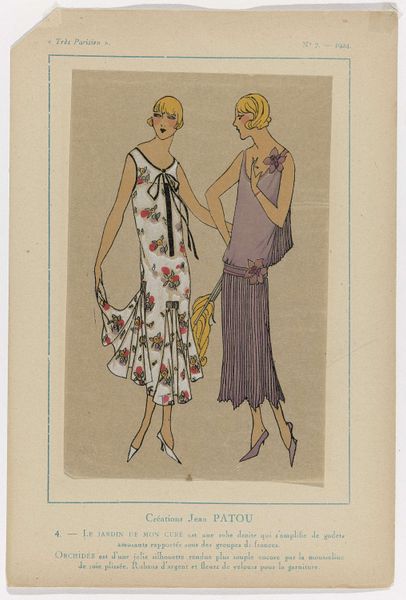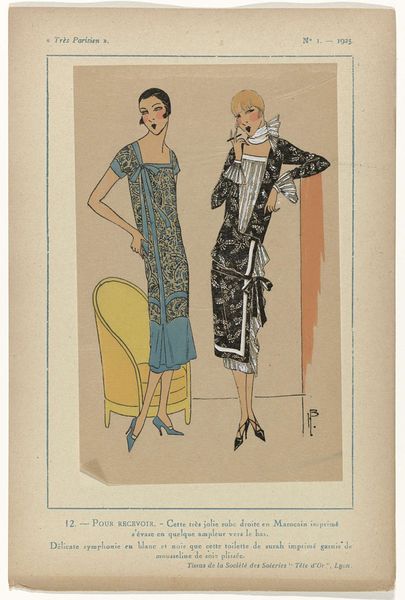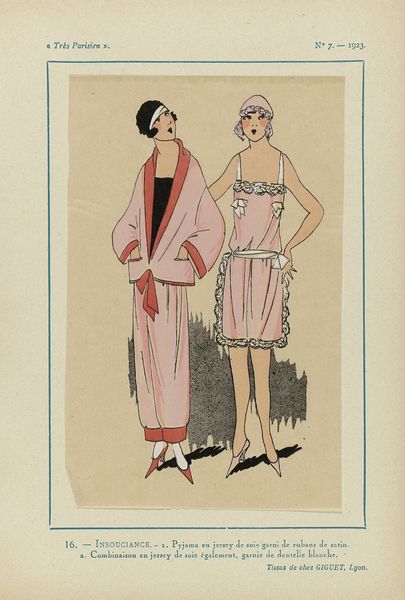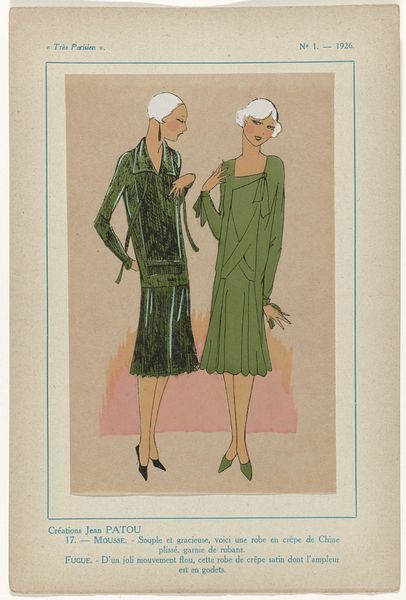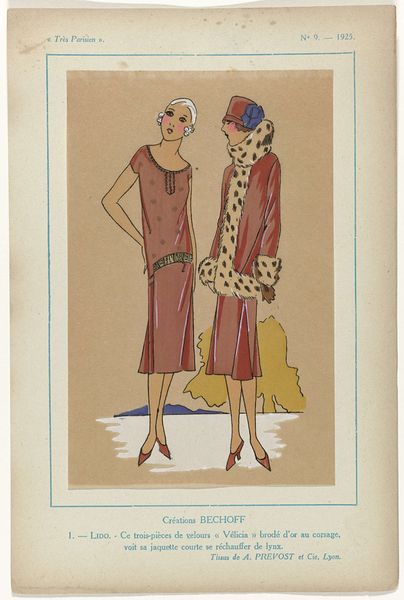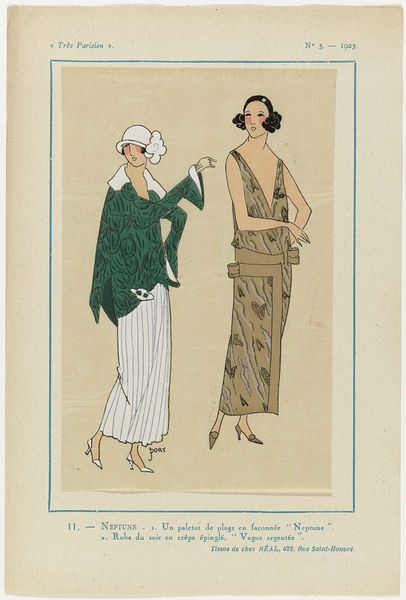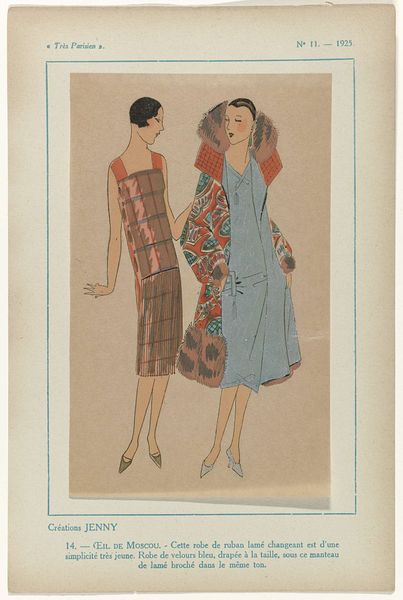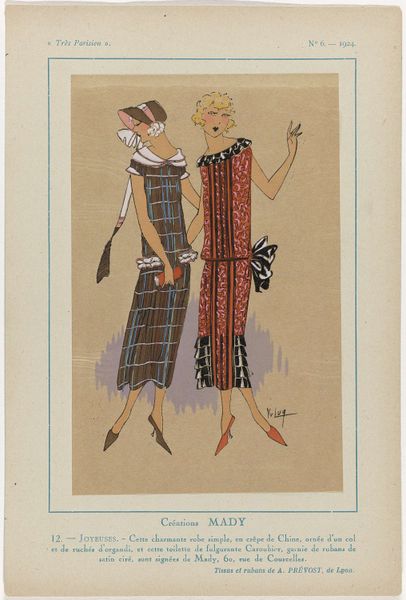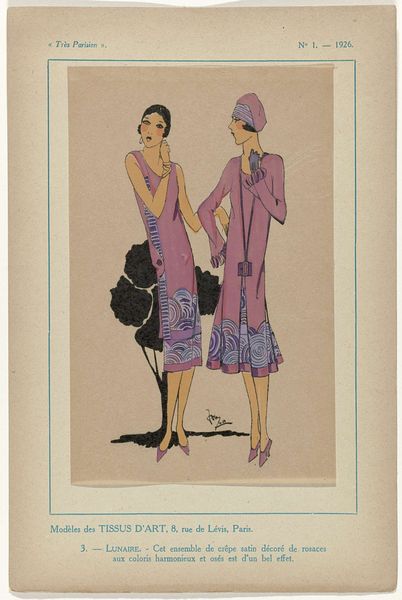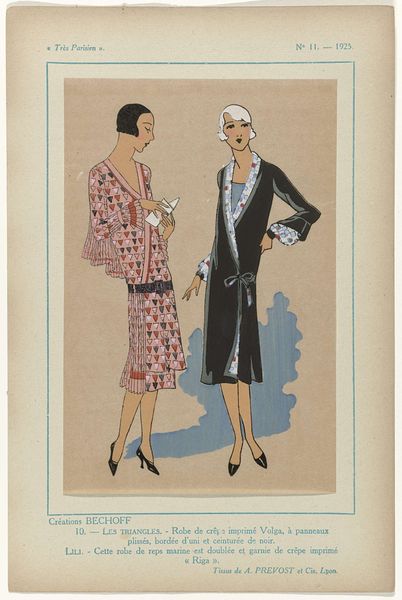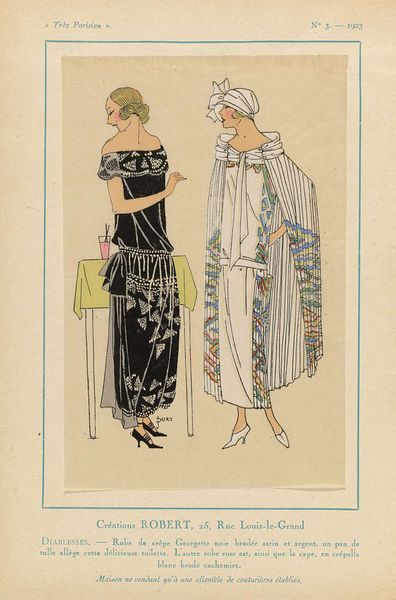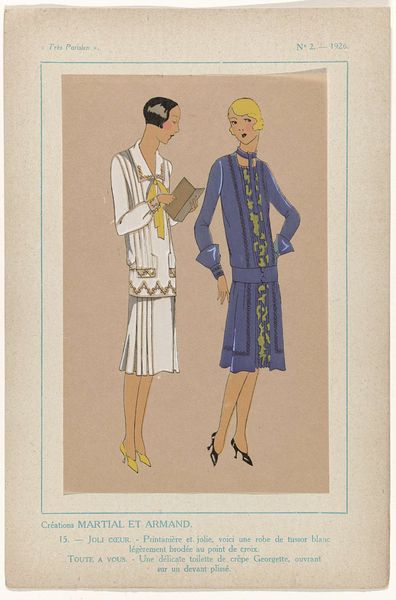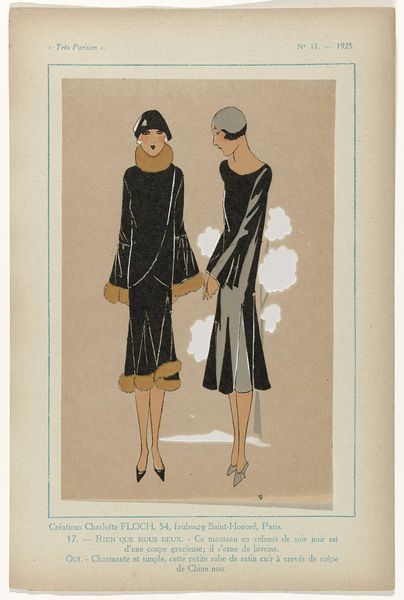
drawing, painting, acrylic-paint, paper
portrait
art-deco
drawing
narrative-art
painting
acrylic-paint
paper
cityscape
watercolour illustration
genre-painting
decorative-art
dress
Dimensions: height 195 mm, width 120 mm, mm
Copyright: Rijks Museum: Open Domain
Editor: Here we have G-P. Joumard's "Très Parisien, 1925, No. 6, Pl. 6: Créations Jean PATOU - VERTIGE", created in 1925. It looks like a fashion illustration, done with what might be acrylic paint on paper. It feels very much of its time. What stands out to you most about this piece? Curator: What immediately grabs me is how this illustration encapsulates the burgeoning agency of women in the 1920s. We see the influence of Art Deco, a style born from industrialization and mass production. These aren't just dresses; they’re declarations. Consider the socio-political climate. Post-World War I, women had entered the workforce in droves, tasted independence, and subsequently demanded suffrage. How might this artwork reflect those seismic shifts? Editor: I see what you mean. The shorter hemlines and the looser silhouettes are definitely a departure from previous eras. They’re almost… rebellious. Curator: Precisely. The dresses allow for more movement, mirroring the newfound freedom women were experiencing. Think about Coco Chanel liberating women from corsets. Joumard is participating in a visual revolution, mirroring these profound social changes and reflecting modern notions of feminine identity. Notice the stylish bob haircuts, a clear signifier of modernity. Do you think these images of a flapper are really representative of a universal experience, or are we really seeing an idealized, upper-class vision? Editor: That’s a great question. I guess it represents more of an aspiration or a symbol of change, even if its reach was limited. It still had an impact on shaping the visual language of the time. Curator: Exactly. Even limited representations can influence collective consciousness. Fashion becomes a powerful tool to reflect social discourse. I find that powerful about this work. Editor: I now understand the drawing represents far more than pretty dresses; it's a tiny lens into broader conversations about the role of women in society. Curator: Precisely!
Comments
No comments
Be the first to comment and join the conversation on the ultimate creative platform.
